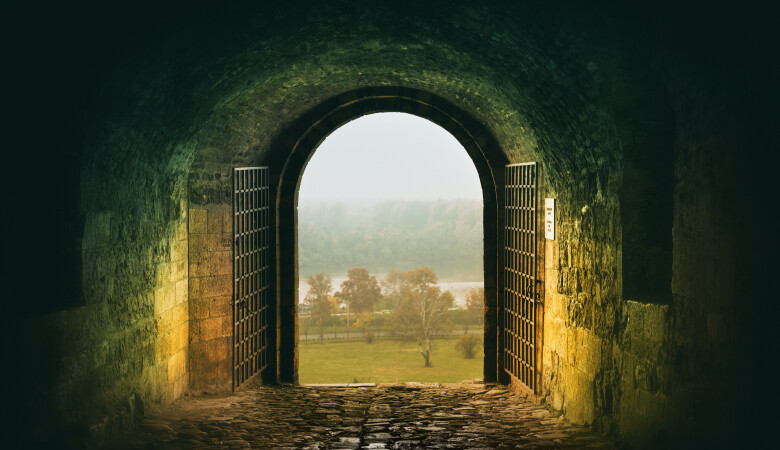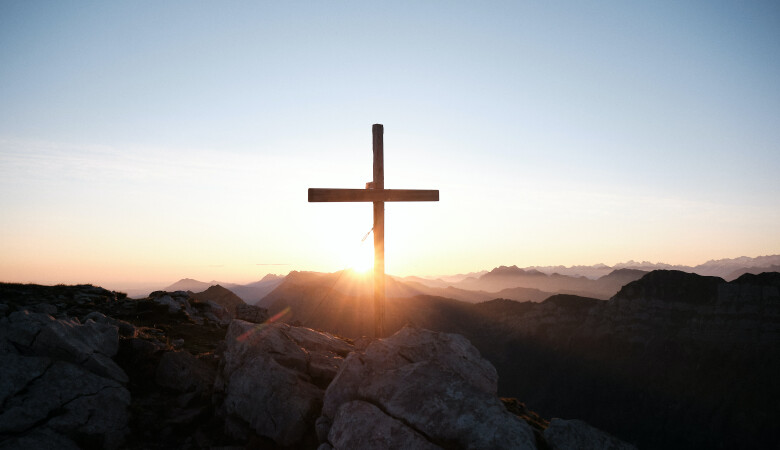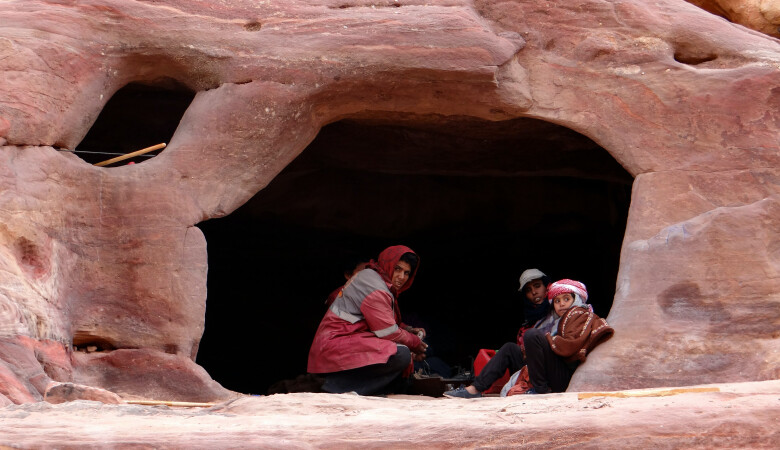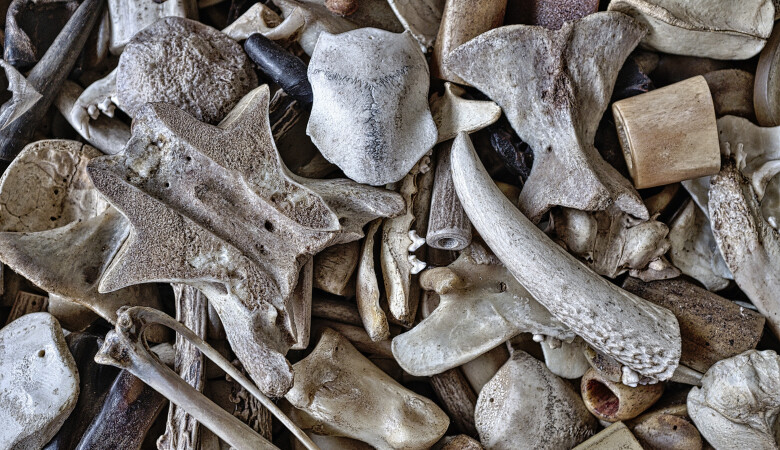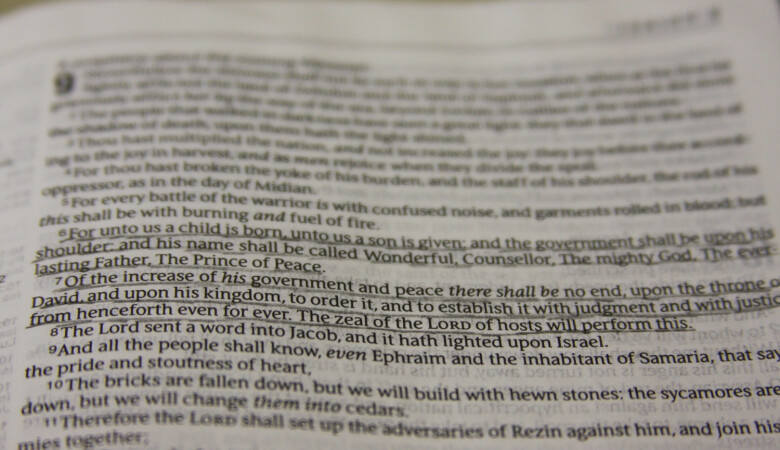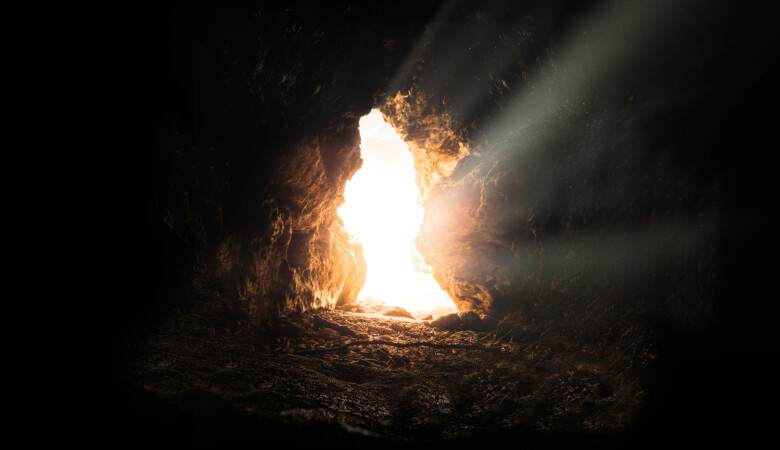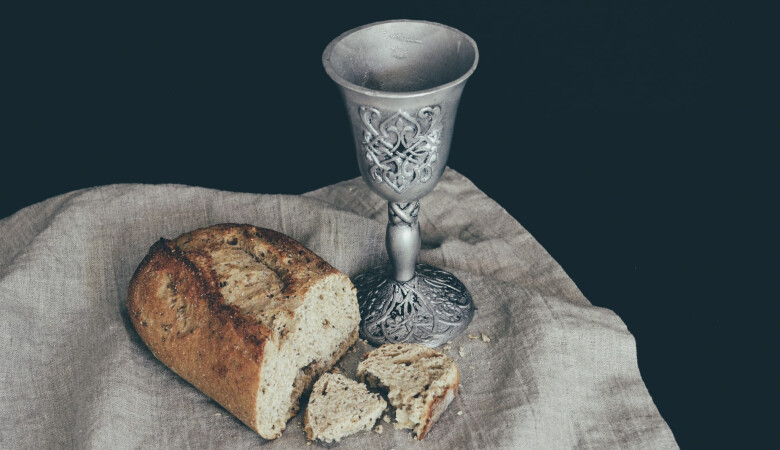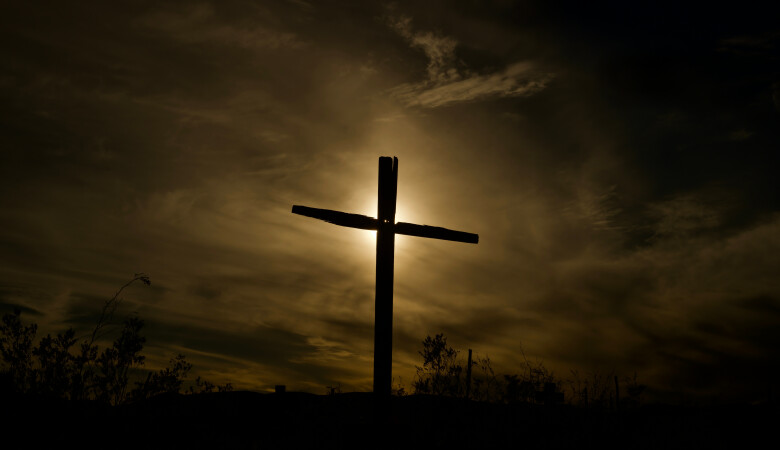Behold the Lamb!
April 07, 2023 | Andy Davis
John 1:29
Worship, Humiliation of Christ
"Behold the Lamb!" by the proclamation of the word of God, vivid images of Christ crucified come into our minds.
- SERMON TRANSCRIPT -
Today, Good Friday, as I mentioned in my prayer, Christians all over the world take time to meditate on, to reflect on the sufferings of Christ on the cross. It's a sober reflection. It's a deep reflection. It's a convicting reflection. It brings pain to us as sinners but also hope. It brings pain in that we see what our sins cost Jesus, but it also brings hope and we see how completely Jesus' blood has atoned for our sins. So our brief meditation this afternoon will focus on the phrase, behold the lamb. Five passages in the New Testament have that phrase, behold the lamb. The lamb of God is Jesus Christ slaughtered for our sins. The word behold is a bit archaic. We still know what it means, but we don't use it very often. For this reason, some modern translations omit it. They don't use it. They drop it out entirely perhaps, or they'll translate it with the word look.
But I think that the word behold is a deeper kind of gazing, deeper kind of looking than just the word look. It's more intensive, certainly behold is a form of looking, but it's looking at something that is in some sense suddenly, perhaps even stunningly revealed to us. Something maybe we have not expected, we didn't see coming. The revelation of which stops us in our tracks. I think that's appropriate that we would stop in our tracks today. That we would freeze, that we would cease all normal activity and we would behold the lamb.
How do we do that? How do we behold the lamb? Jesus Christ On the cross? The author of Hebrews tells us that he died once for all. A unique moment in time, never to be repeated. We cannot physically go anywhere on planet earth to behold the lamb, but the Apostle Paul speaks powerfully to the Galatians in Galatians 3:1. He says, "Before your very eyes, Jesus Christ was clearly portrayed as crucified." Galatians lived in Asia Minor. They weren't in Palestine when Jesus died. So clearly, Paul means before the eyes of their hearts, before their faith through the proclamation of the gospel. Jesus Christ was clearly portrayed as crucified. So by the proclamation of the word of God, vivid images of Christ crucified come flooding into our minds and our hearts. As the author to Hebrews puts it as seeing him who is invisible.
So we are going to behold the lamb by the ministry of the word of God and by the outpouring of the Holy Spirit in our minds and hearts. As I looked at the five times the New Testament combines these words, behold the lamb. I see three ways for us to behold the lamb now. First of all, behold the lamb in prophecy. Secondly, behold the lamb in agony. And third, behold the lamb in victory.
I. Behold the Lamb in Prophecy
First, let us behold the lamb in prophecy. The first two times in the New Testament, this phrase is used as you just heard in the reading. It was by John the Baptist as he was carrying on his ministry. And he was baptizing, huge crowds were coming to him and one special day Jesus came to be baptized by John. And John pointed twice at Jesus on consecutive days, John 1:29, "Behold the lamb of God." He said, "Who takes away the sin of the world." And then “the next day, John was standing with two of his disciples and he looked at Jesus as he walked by and said, ‘Behold the lamb of God.’" Now John the Baptist was the forerunner to Jesus. He was sent by God the Father to prepare the way for Jesus and also to reveal him as Savior to Israel. This is clearly the work of a prophet. John was in some sense the final Old Testament prophet whose words and whose ministry prepared Israel for the coming Messiah. As Jesus himself said in Matthew 11:13, "For all the prophets and the law prophesied until John." So in some sense, John culminates that work of prophecy paving the way for Jesus. Now, the phrase that John used those two consecutive days is powerful. "Behold the lamb of God who takes away the sin of the world."
Now there can be little doubt as we meditate on this, that this directly connects with the prophetic animal sacrificial system that God established whose entire purpose was to prepare the world for Jesus' bloody sacrificial death on the cross for our sins. Now, what precise prophetic image John had in mind from the old covenant's animal sacrifices? We cannot know for sure. Most likely it was the Passover lamb because Jesus would die at the Passover to fulfill that prophetic image. So this Good Friday service, it lines up with Passover. It's being held during the same time as Passover because we Christians believe that Jesus is our Passover lamb. First Corinthians 5:7, "Christ our Passover lamb has been sacrificed." This powerful image of course comes from the final night that Israel spent as slaves in Egypt. That dreadful night of the 10th and final plague of Pharaoh and on all Egypt. The plague on the firstborn. The angel of the Lord went throughout all of Egypt to kill all the firstborn in any house.
The only remedy, the only refuge was the sacrifice of the Passover lamb. A lamb without blemish or defect, taken in by each Israelite home. It was sacrificed at twilight. Its blood was applied, painted by the branch of hyssop plant on the doorposts and lentils of each house in which the Jewish people lived. The Lord had been very clear. It was when he saw the blood, when the blood was shed and applied. And when the angel of the Lord saw that shed blood, only then would he pass over that house and not slaughter the firstborn in that house. The blood shed atone for the sins of the people and not a single bone of the lamb was to be broken, just its blood poured out because it was the blood that made atonement for their lives. Of course, the concept of animal sacrifice goes back much further than that night, much further than Passover.
For centuries before Moses, God had commanded Abraham, "Take your son, your only son, Isaac, whom you love and offer him as a sacrifice on one of the mountains I will show you about." Abraham obeyed and when he took his son on a three-day journey to the place and they went up the mountain together and when they arrived, Isaac said to his father, "Abraham, behold the wood and the fire." But where is the lamb for the sacrifice? To some degree, Isaac's question kind of sums up the old covenant. Where is the lamb? Waiting for the lamb, it hasn't come yet. And John the Baptist statement, “Behold the lamb”, sums up the New Testament.
And so Isaac said, "Where's the lamb?" And Abraham said, "God himself will provide the lamb for the burn offering, my son." Abraham was stopped at the last possible moment by the angel of the Lord saying, "Now I know that you fear God since you have not withheld from me, your son, your only son." Abraham at that moment lifted his eyes and saw a ram in the thicket caught by his horns and he sacrificed that animal in the place of his son. God knew even then who would be the lamb that he would provide for himself, Jesus Christ. But every animal sacrifice there had ever been up to that point and from that point on was a prophecy of Christ as the lamb of God who takes away the sins of the world. Acted out prophecy.
But there's two types of prophecy. There's that typological acted out prophecy of which animals sacrifice the clearest example, but then there's verbally predictive prophecy. And that you heard read by Mike tonight from Isaiah 52:53, which clearly explains the purpose of animal sacrifice, substitutionary atonement. And God spoke most clearly there in that prophetic passage about the lamb of God who would take away the sins of the world. Who has believed our message, and to whom has the arm of the Lord been revealed? The word revealed is powerful, just as it said in the verse right before that what they had not heard about, they will see. How will they see these kings of the earth or the nations of the earth?
They will see the same way you are right now by the proclamation of the word. That's how they'll see. And the arm of the Lord is revealed by the preaching of the prophetic message fulfilled by Christ. But it only happens as God reveals to your hearts, by the spirit, reveals Jesus to you. Only then will you see. Only then will you be able to behold the lamb. So to whom has the arm of the Lord been revealed? Has he been revealed to you, to your faith. Now Isaiah makes it clear that Jesus would be slaughtered in such a way that he would be repulsive to the human eye.
Isaiah 52:14-15, "Just as there are many who appalled at him, his appearance was so disfigured beyond that of any man and his form marred beyond human likeness. So in that way, will he sprinkle many nations, sprinkle them with atoning blood." Isaiah 53:2-3, "He had no beauty or majesty to attract us to him, nothing in his appearance that we should desire him. He was despised and rejected by men. A man of sorrows and familiar with suffering like one from whom men hide their faces. He was despised and we esteemed him not." Isaiah especially makes it plain though why the lamb of God was slaughtered and what that phrase means, "Behold the lamb of God who takes away sins of the world." And that is the principle of substitutionary atonement. That's the essence of all animal sacrifice. That all sin deserves a death penalty and the death penalty can be paid by a substitute.
And the essence of that point is that guilt can be transferred from us to the substitute. Isaiah 53 makes it plainer than any other passage in the entire Bible including in the New Testament. Listen to these words again. He was pierced for our transgressions. He was crushed for our iniquities. The punishment that brought us peace was upon him and by his wounds we are healed. We all are like sheep gone astray, each of us has turned to his own way and the Lord has laid on him. The Lord has laid on him the iniquity of us all. He was oppressed and afflicted, yet he did not open his mouth. Listen to this. He was led like a lamb to the slaughter. Behold the lamb, he was led like a lamb to the slaughter and as a sheep before it shears his silence so he did not open his mouth. There is the lamb of God, Jesus, our substitute who suffered and died in our place to take away our sins and not ours only, but the sins of the whole world. So behold the lamb in prophecy. Second, behold the lamb in agony.
"There is the lamb of God, Jesus, our substitute who suffered and died in our place to take away our sins and not ours only, but the sins of the whole world."
II. Behold the Lamb in Agony
We need to consider the record of Jesus actually dying in our place on the cross. That is the power of Good Friday. The tone, the feel for me of Good Friday is one of sober-minded reflection and even a renewed grief over my sins. Just as the tone for Easter Sunday is celebration, victory, triumph. We'll have some of that victory tonight even, but it's reasonable for us to grieve still over our sins because we're still in danger. Won't be grieving in heaven, but it's reasonable for us to have an ongoing work of repentance now and that's what Good Friday is good for for me, to reflect on what my salvation cost Jesus. It's an opportunity to gaze with eyes of faith, to behold, with eyes of faith and wonder, reverence and yes, grief to see the cost of our salvation. Jesus' death was because of our sins, because of my sins, Galatians 2:20, Christ love me and gave himself for me, make it personal. Because of my sins, he went through that.
I grew up in the Roman Catholic faith and when I was a boy, I served as an altar boy. And this time of year, specifically Good Friday, I participated in something called the stations of the cross. In my Catholic Church there were stained-glass windows that depicted various aspects of the final hours of Jesus' life leading right up to the cross. And we would go from position to position and meditate on the various scenes that were depicted in the stained-glass windows. But I think it's far more powerful and effective to do it from scripture and to gaze at the historical accounts that we have in the gospels of Jesus's actual death. And so that's what we're doing now.
Listen to Mark's account, Mark 15:15-39,
"Wanting to satisfy the crowd, Pilate released Barabbas to them. He had Jesus flogged and handed him over to be crucified. The soldiers led Jesus away into the palace that is a praetorium and called together the whole company of soldiers and there they put a purple robe on him and twisted together a crown of thorns and set it on him and they began to call out to him, 'Hail king of the Jews.' Again and again. They struck him on the head with a staff and spit on him. Falling on their knees, they paid homage to him. And when they had mocked him, they took off the purple robe and put his own clothes on him. Then they led him out to crucify him. Now a certain man from Cyrene, Simon the fall of Alexander and Rufus was passing by on his way in from the country and they forced him to carry the cross. They brought Jesus to the place called Golgotha, which means the place of the skull.There they offered him wine mixed with myrrh, but he did not take it. And they crucified him. Dividing his clothes, they cast lots to see what each would get. It was the third hour when they crucified him. The written notice of the charge against him read, 'The King of the Jews.' They crucified two robbers with him, one on his right and one on his left. Those who passed by hurled insults at him, shaking their heads and saying, 'So you who are going to destroy the temple and build it in three days? Come down from the cross and save yourself.' In the same way the chief priests and the teachers of the law mocked him among themselves. 'He saved others they said, but he can't save himself. Let this Christ, this king of Israel, come down now from the cross that we may see and believe.' Those crucified with him also heaped insults on him. At the sixth hour, darkness came over the whole land until the ninth hour and at the ninth hour Jesus cried out in a loud voice, ‘Eloi, Eloi, lema sabachthani?’ Which means, 'My God, my God, why have you forsaken me?' When some of those standing near heard this, they said, 'Listen, he's calling Elijah.' One man ran and filled a sponge with wine vinegar, put it on a stick and offered it to Jesus to drink. 'Now leave him alone. Let's see if Elijah comes to take him down.' he said. With a loud cry, Jesus breathed his last. The curtain of the temple was torn in two from top to bottom. And when the centurion who stood there in front of Jesus heard his cry and saw how he died, he said, 'Surely, surely this man was the son of God.'"
Well, let's understand the physical agonies. When Pilate had Jesus scourged, that involved a wooden handle with long straps of leather embedded with bits of bone or metal to tear the flesh from the body. The victim would be tied to a post, his hands held high over his head and his feet suspended off the ground so that the body would be taut. As the scourge tore into his back, the muscles would be lacerated, veins severed, internal organs might even be exposed. The scourging was so awful that it took two soldiers physically to do it. Scourging often proved fatal. Along with the scourging, Jesus was subjected to additional mockery. The Roman soldiers frequently played this kind of game. They engaged in the game of mockery in which they would take some hapless stooge and dress them up in a purple robe like an emperor, and then mockingly revere him. And here they do it to Jesus, adding the painful indignity of the crown of thorns, which they took rods and smashed down into his brow, beating him in the head with rods.
After all this bloody horror, Jesus was led away to be crucified. Carrying his own cross. Crucifixion was the cruelest form of execution ever devised specifically because it was so slow and painful in addition to being utterly debasing and dehumanizing. Now Jewish law required that Jesus die outside the city gates, rejected by his people. So he was paraded before the eyes of the scornful population who heaped abuse on him as he went. He was forced to carry a heavy beam on his shoulders and at some point weakened by the trauma and the blood loss. He was physically unable to continue and they forced this man, Simon, to help carry the cross. When they reached Golgotha, they forced the victim onto his back and nailed him to the cross beam as it lay on the ground. Nails would've measured five to seven inches long, more resembling modern railroad spikes.
They were driven through his wrists rather than through the palms so that they could support the whole body weight as the victim slumped in the agony. The victim's feet would be crossed over and a single spike would be driven through them both at once. The nails would tear through the nerves and the wrists and the feet causing overwhelming jolts of pain again and again. This would only increase as the cross was slowly raised and until it was vertical and dropped into place with a thud that sent more shocks of pain through the entire body, but the wounds from the nails were not sufficient to cause immediate death or even unconsciousness. Now, it was intended to be a slow, agonizing death, not a quick kill. The victim would then be hanging, suspended on the cross with his diaphragm constricted.
Death would eventually come by suffocation. In order to stay alive, the victim was forced to push up with his feet to breathe. I can scarcely imagine the agony the victim felt at this effort. He would then slump back down to relieve the pain in his wrists and feet, but soon he would need to breathe again and he'd have to push back up. As he grew fatigued, he would experience muscle spasms and the pain would make every breath a living nightmare. There would be a grotesque dance of death like this until finally the victim had no strength left. Carbon dioxide would build up in his bloodstream and he would finally suffocate to death. Occasionally to hasten death, the soldiers would take a large mallet and then shatter the bones of the victim's legs, ending the man's life very quickly. But this could not happen to Jesus, for not a single bone was to be broken to fulfill the Passover lamb prophecy.
Also, Jesus made it plain. John 10:18, "No one takes my life from me, but I lay it down of myself. I have the authority to lay it down and I have the authority to take it back up again. This command I received from my father." So in some sense the crucifixion didn't kill him in that sense. But at the right time when Jesus, knowing that all the scriptures had been fulfilled, simply gave up his spirit by a control that he alone possessed. As it says in John 19:30, "When he had received the drink, Jesus said, 'It is finished.' And with that he bowed his head and gave up his spirit." The only man in history with that kind of absolute control over his spirit as it was housed in his body. He laid down his life for us. Yet he was fully man and the crucifixion did truly kill him.
It was the direct cause of his agonies and his death. Thus, we behold the lamb in agony. May this forever give us an appropriate sense of the cost of our sins to our savior. It was no light thing for him to lay down his life for us and for our sins.
III. Behold the Lamb in Victory
Thirdly, behold the lamb in victory, victory. And for this, I go to the passage in Revelation 5 where we have that expression, Behold and lamb. Listen to what it says. Revelation 4 has a picture of Almighty God seated on the throne of the universe. Ruling the universe, Almighty God. And 24 elders around concentric circles and heaven and order and the power of almighty God. Now Revelation 5:1-14,
"Then I saw in the right hand of him who sat on the throne, a scroll with writing on both sides and seal with seven seals. And I saw a mighty angel proclaiming in a loud voice, 'Who is worthy to break the seals and open the scroll.' But no one in heaven or earth or under the earth could open the scroll or even look inside.
I wept and wept because no one was found who was worthy to open the scroll or look inside. Then one of the elders said to me, 'Do not weep. Behold the lion of the tribe of Judah, the root of David, his triumphed. He is able to open the scroll and its seven seals.' Then I saw a lamb looking as if it had been slain standing in the center of the throne. He came and took the scroll from the right hand of him who sat on the throne. And when he took it, all of heaven erupted in worship. Cascading worship on Jesus because of his victory, because he has triumphed and they sang a new song. 'You are worthy to take the scroll and open its seals because you are slain and with your blood, you purchased men for God from every tribe and language and people and nation. You have made them to be a kingdom and priest to serve our God and they will reign on the earth.'
Then I looked and heard the voice of many angels numbering thousands upon thousands and 10,000 times 10,000. They encircled the throne and the living creatures and the elders and in a loud voice they sang, 'Worthy is the lamb who is slain to receive power and wealth and wisdom and strength and honor and glory and praise.' Then I heard every creature in heaven and an earth and under the earth and on the sea and all that is in them singing to him who sits on the throne and to the lamb, be praise and honor and glory and power forever and ever."
That is the victory of the lamb. So behold the lamb and victory. I know this translation said behold the lion. So I kind of cheated a little bit, but the next verse did mention the lamb, so I just kind of moved it. But first behold the lion, but then it says, behold the lion has triumphed. I cheated on that one too and changed it to victory. But behold the lamb's triumph, behold his victory. And how did he triumph? He triumphed by dying like a lamb. I looked and I saw a lamb as if it had been slain. And what is his victory? His victory is winning his people by his blood to eternal life, to eternal glory, to eternal joy and worship. For the joy that was set before him, that's the victory. And he purchased people, you and me, by his blood. That's the victory. Later in Revelation, we have two other passages with behold and lamb.
"What is his victory? His victory is winning his people by his blood to eternal life, to eternal glory, to eternal joy and worship. "
Revelation 7:9-10. "After this I looked and behold a great multitude that no one could number from every nation, from all tribes and peoples and languages, standing before the throne and before the lamb. Clothed in white robes with palm branches in their hands and crying out with a loud voice, 'Salvation belongs to our God who sits on the throne and to the lamb.'" That's the harvest. And then Revelation 14 focuses on the Jewish people, the 12 tribes, 12,000 sealed, perfect number, 144,000. [Revelation 14:1-3] "Then I looked and behold on Mountain Zion stood the lamb and with them 144,000 who had his name and his father's name written on their foreheads. And I heard a voice from heaven like the roar of many waters and like the sound of loud thunder, the voice I heard was like the sound of a harpist playing on their harps. And they were singing a new song before the throne and before the four living creatures and before the elders." These represent the redeemed from the Jews first and also from the Gentiles for all eternity, that is the victory. So behold the lamb in the victory.
Well this afternoon, now evening, we have stood together under the word of God, beholding the Lamb of God, Jesus Christ, who takes away the sins of the world. We behold the lamb in prophecy because everything Jesus did on the cross was clearly planned and predicted in the mind of God before the foundation of the world, and then unfolded over centuries of Jewish history in the Old Testament. Behold the Lamb in prophecy. We behold the lamb in agony because it's vital for us sinners who are still sinners and still wrestle with sin and still in danger from the world of flesh and the devil. To have an ongoing work of repentance in which going again and again to Christ crucified and seeing the cost that was paid for us and making it personal, saying that Jesus loved me and gave himself for me is vital. And thirdly, we behold the lamb in victory because God raised him from the dead and we're going to celebrate that on Sunday. And we have glimpses in Revelation 5, and Revelation 7, and Revelation 14 of the victory that Jesus won by his blood.
Close with me in prayer. Lord, we thank you for the brief time we've had today to gather together, to sing, to pray, to hear your word, and to behold the lamb who takes away the sins of the world. Father, I pray that everyone here in this room would repent and trust in Christ for the salvation of their souls, that there will be no one here lost. And I pray that all of us who have found forgiveness in Christ would, by faith, by the ministry of the word, continually behold the lamb of God who takes away the sins of the world. In Jesus' name, amen.






